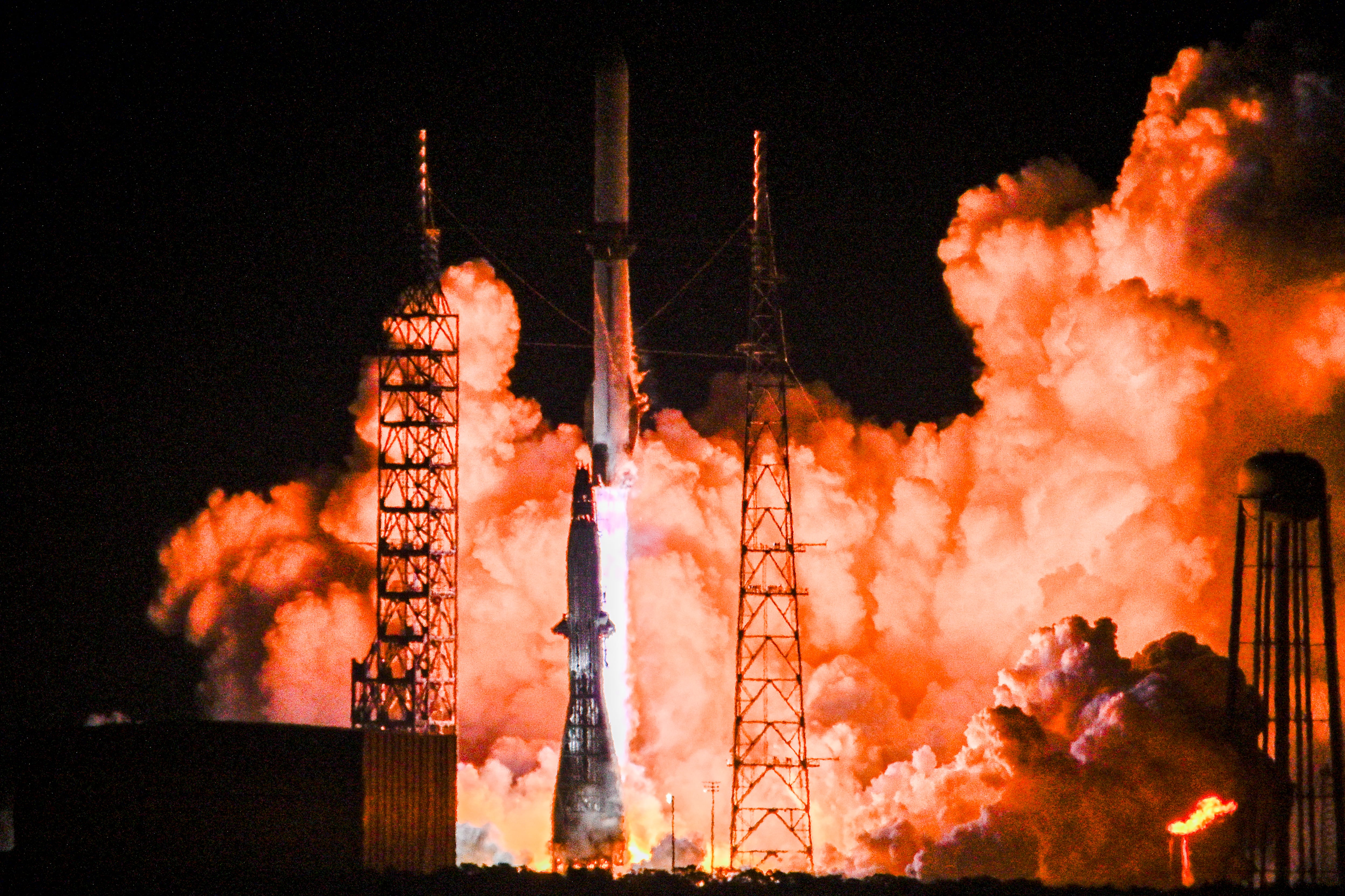The Artemis program that’s supposed to again bring humans back to the lunar surface suffered yet another setback this week, leaving many members of the public and government officials alike asking: why is NASA still pursuing this mission?
An Artemis 1 rocket carrying an uncrewed capsule was originally scheduled to lift off last month, but a series of technical issues and a hydrogen leak caused NASA to cancel launches on Aug. 29 and Sept. 3. And after working to address the problems, NASA decided this week to cancel another planned launch Tuesday and roll the system back into the Vehicle Assembly Building at Kennedy Space Center ahead of Hurricane Ian.
It’s the latest setback for the Space Launch System, designed to ferry astronauts back and forth to a soon-to-be-established lunar base on the moon, after suffering nearly a decade of delays and cost overruns in the tens of billions of dollars. The lunar launch service, which is contracted out by NASA to a joint venture between Boeing and Northrop Grumman, is estimated to cost around $4 billion per launch. Compare that to roughly $100 million for SpaceX’s similarly heavy rocket Starship per launch, and it feels like the U.S. government is getting a bad deal.
However, no matter how bad the deal, the government refuses to cancel the program. By outsourcing the rocket’s R&D activities across more than 20 states, SLS has garnered so much political support from members of Congress and industry alike who are keen for these jobs and contracts to stay, despite fierce opposition.
And herein lies the big problem: the government needs to innovate; it says it wants to innovate, but it won’t. Not just in the space launch domain, but across the entire defense spectrum.
There are two dimensions that are gravely concerning for the U.S. national security right now: first, the ongoing trade, economic and combat wars that being fought to the East; and second, the incredible speed with which America’s adversaries including China are innovating in hypersonics, drones and cyber warfare. Never has the need for defense innovation been so high. However, never has the prospect of achieving this felt so low.
While NASA’s SLS debacle has been playing out in front of China and North Korea, the private sector is starting to lead where the public sector won’t, especially through a renewed focus on “defense tech” by venture capitalists which has historically shunned weaponry. Funds such as Andreessen Horowitz’s American Dynamism, led by renowned investor Katherine Boyle, are starting to invest in the next generation military assets such as Shield AI, which is revolutionizing autonomous military drones and is valued at over $2 billion.
Outside of the capital markets, the government too is investing in early stage technologies, but to amounts that pale in comparison to the private and public capital markets. The Small Business Innovation Research program delivers about $2 billion a year to early stage cutting edge technologies through grants, as well as the Air Force, the Navy and the Army having their own versions of niche venture capital programs. This is compared to the nearly $10 trillion of capital being managed by the private markets.
However, allocating relatively small amounts of capital into startups is the easy part, especially when you have trillions of dollars at your disposal. The hard part is actually adopting and integrating this technology, and this is where the government falls dangerously short.
Is the Defense Innovation Unit a Pentagon priority?
The Defense Innovation Unit is a government Pentagon organization founded to help the government make faster use of emerging technologies, with the goal of transforming the military and strengthening the national security innovation base. Rapid defense acquisition of novel technologies being developed in the private sector falls squarely into the DIU’s mandate, a political and hard-to-navigate process. Established in 2015, the DIU was able to escape this bureaucracy by reporting directly to the former Defense Secretary Ash Carter, who is known for his ongoing commitment to defense innovation. However the unit was later demoted to reporting to the Secretary for Research and Engineering under Secretary Jim Mattis.
This demotion, loudly signifying a change in priorities of the Defense Department away from innovation, has had consequences. The retirement this month of DIU’s director, former Symantec CEO Michael Brown, comes amid frustrations about the pace and direction of achieving its core mission.
What startups and core technologies need today, in addition to urgent and long-term funding, are customers that will adopt, use and eventually buy their technologies. This will enable them to offset their R&D expenses in efficient ways that are required by the venture capital and private equity markets funding them. The job to be done by governments now is to actually start using and acquiring the technology that they are funding, to provide much needed revenue to technologies that cannot operate in the private sector. Moreover, it would send strong market signals that government and defense sectors can be an attractive investment for further venture and private capital.
Both examples of NASA’s SLS mission and the DIU losing its director very publicly highlight that the government, which claims to want to innovate, is unable to find and embrace new ways of acquiring and using technologies if it means disrupting political forces and existing relationships with contractors such as Boeing, Lockheed Martin or Northrop Grumman. This comes at the dangerous price of falling behind adversaries, which are innovating at astonishing speeds.
More than anything, this shines a light on the government’s failure to take seriously the urgent need to out-innovate the enemy; the need to fully utilize the strength of the financial capital markets; and to reform the Office of Management and Budget’s acquisition system.
Unfortunately, if faced with no urgent change, the United States will run out of time to protect its historical technological advantage.
Sinéad O’Sullivan is a Professor of Aerospace Engineering, formerly at Harvard Business School’s Institute for Strategy and Competitiveness where she focuses on national and global security.
Have an Opinion?
This article is an Op-Ed and the opinions expressed are those of the author. If you would like to respond, or have an editorial of your own you would like to submit, please email C4ISRNET Senior Managing Editor Cary O’Reilly.





